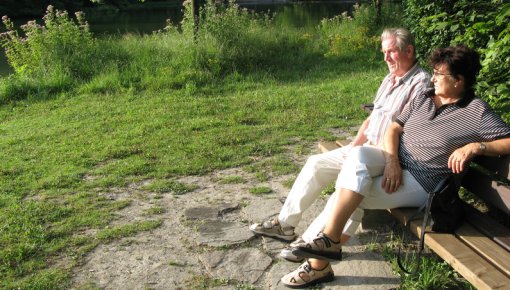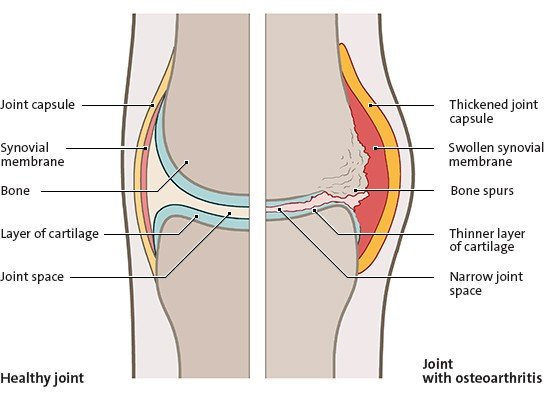Bastick AN, Verkleij SP, Damen J et al. Defining hip pain trajectories in early symptomatic hip osteoarthritis - 5 year results from a nationwide prospective cohort study (CHECK). Osteoarthritis Cartilage 2016; 24(5): 768-775.
Bastick AN, Wesseling J, Damen J et al. Defining knee pain trajectories in early symptomatic knee osteoarthritis in primary care: 5-year results from a nationwide prospective cohort study (CHECK). Br J Gen Pract 2016; 66(642): e32-39.
Da Costa BR, Pereira TV, Saadat P et al. Effectiveness and safety of non-steroidal anti-inflammatory drugs and opioid treatment for knee and hip osteoarthritis: network meta-analysis. BMJ 2021; 375: n2321.
Holden MA, Hattle M, Runhaar J et al. Moderators of the effect of therapeutic exercise for knee and hip osteoarthritis: a systematic review and individual participant data meta-analysis. Lancet Rheumatol 2023; 5(7): e386-e400.
Hunter DJ, Bierma-Zeinstra S. Osteoarthritis. Lancet 2019; 393(10182): 1745-1759.
Katz JN, Arant KR, Loeser RF. Diagnosis and Treatment of Hip and Knee Osteoarthritis: A Review. JAMA 2021; 325(6): 568-578.
Lawford BJ, Hall M, Hinman RS et al. Exercise for osteoarthritis of the knee. Cochrane Database Syst Rev 2024; (12): CD004376.
Pereira TV, Saadat P, Bobos P et al. Effectiveness and safety of intra-articular interventions for knee and hip osteoarthritis based on large randomized trials: A systematic review and network meta-analysis. Osteoarthritis Cartilage 2025; 33(2): 207-217.
Schmidt CO, Günther KP, Goronzy J et al. Häufigkeiten muskuloskelettaler Symptome und Erkrankungen in der bevölkerungsbezogenen NAKO Gesundheitsstudie [Frequencies of musculoskeletal symptoms and disorders in the population-based German National Cohort (GNC)]. Bundesgesundheitsblatt Gesundheitsforschung Gesundheitsschutz 2020; 63(4): 415-425.
Shahid A, Thirumaran AJ, Christensen R et al. Comparison of weight loss interventions in overweight and obese adults with knee osteoarthritis: A systematic review and network meta-analysis of randomized trials. Osteoarthritis Cartilage 2024; S1063-4584(24): 01367.
Thomas MJ, Guillemin F, Neogi T. Osteoarthritis Flares. Clin Geriatr Med 2022; 38(2): 239-257.
Van Berkel AC, Schiphof D, Waarsing JH et al. 10-Year natural course of early hip osteoarthritis in middle-aged persons with hip pain: a CHECK study. Ann Rheum Dis 2021; 80(4): 487-493.
Whittaker JL, Losciale JM, Juhl CB et al. Risk factors for knee osteoarthritis after traumatic knee injury: a systematic review and meta-analysis of randomised controlled trials and cohort studies for the OPTIKNEE Consensus. Br J Sports Med 2022; 56(24): 1406-1421.
IQWiG health information is written with the aim of helping people understand the advantages and disadvantages of the main treatment options and health care services.
Because IQWiG is a German institute, some of the information provided here is specific to the German health care system. The suitability of any of the described options in an individual case can be determined by talking to a doctor. informedhealth.org can provide support for talks with doctors and other medical professionals, but cannot replace them. We do not offer individual consultations.
Our information is based on the results of good-quality studies. It is written by a team of health care professionals, scientists and editors, and reviewed by external experts. You can find a detailed description of how our health information is produced and updated in our methods.


